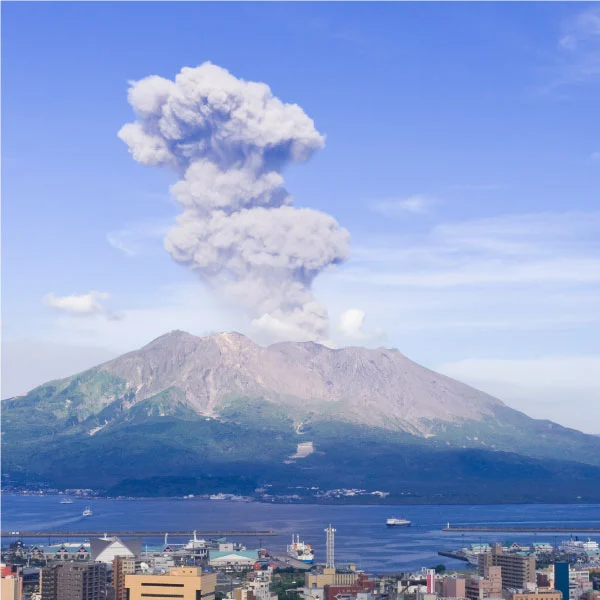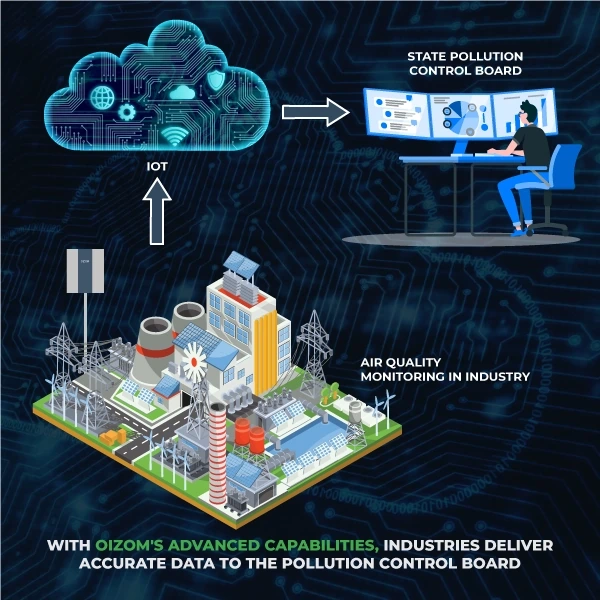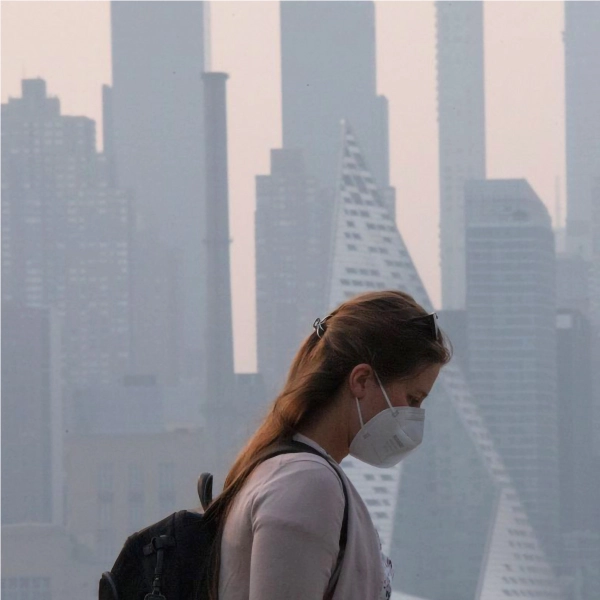Volcanic eruptions present many hazards, including lava flows, explosions, toxic gas clouds, ash falls, pyroclastic flows, avalanches, tsunamis, mudflows, and dust. In addition to the immediate threats, volcanic activity has secondary impacts such as property damage, agricultural loss, and possibly changes in weather and climate. Fine particles of rock powder released from a volcano can remain suspended in the sky for extended periods, causing red sunsets and climatic changes hundreds of kilometers away. Today, we’ll go on a journey to discover the secrets of volcanic dust, including its formation, varieties, and significant health and environmental impact.
What is volcanic dust?
Volcanoes can emit ash, particulate matter, and air pollution for miles around the eruption. They also create and release gasses combined with water and small particles, resulting in vog pollution. Vog has a variety of hazardous components. One of the gasses emitted is sulfur dioxide (SO2). SO2 levels in vog are highest near the volcano. SO2 irritates the eyes and has a variety of negative consequences on the lungs, including wheezing, shortness of breath, and difficulty breathing.
Volcanic dust refers to finer particles with a diameter of less than 2 millimeters. Imagine fragments of volcanic glass, pulverized rock, and minerals flowing. The explosiveness of the eruption determines their size. Volcanic dust poses several potentially dangerous situations. Whole cities have been buried under volcanic dust. Large amounts of dust in the air can disrupt the weather. Floating volcanic ash clouds can pose a severe hazard to international air traffic. So far, it has been impossible to promptly alert air traffic of dangerous approaching ash clouds. The terms “volcanic dust” and “volcanic ash” are both used for the same material; however, “volcanic dust” is more appropriately used for powder-size material.
Formation of Volcanic Dust
When a volcano erupts, it may send rock particles into the atmosphere. This substance is referred to as tephra. Blocks and bombs refer to the most significant fragments of tephra (larger than 64 mm). More minor ejecta, such as lapilli (2-64 mm) and ash (2 mm), are convected upward by the eruption’s heat and fall farther away from the volcano. The smallest particles, smaller than 0.01 mm, known as volcanic dust, can linger in the atmosphere for two or three years following a volcanic eruption.
Various parameters, including magma composition, eruption intensity, and water presence, determine the amount and kind of volcanic dust created during an eruption. For example, an explosion of gas-rich magma will most likely result in a high volume of fine ash, but a more easily eruption of viscous magma may result in larger particles.
Types of Volcanic Dust
The three main types of volcanic dust – ash, lapilli, and bombs – exhibit unique properties and impacts.
Tephra / Pyroclastic Terminology
“Tephra” and “pyroclastics” are general terms used for particles of igneous rock material of various sizes emitted from volcanoes. They are classified by size. “ash” and “dust” communicate a specific size of tephra or pyroclastic particles. These are summarized in the table above.
Each sort of volcanic dust has its unique journey and impact. While ash can go the farthest and have the greatest damage, lapilli often affects areas closer to the eruption. Bombs, while less common, are a devastating force. Understanding these distinctions is critical for anticipating and responding to volcanic activity and its numerous effects.
Characteristics of Volcanic Dust
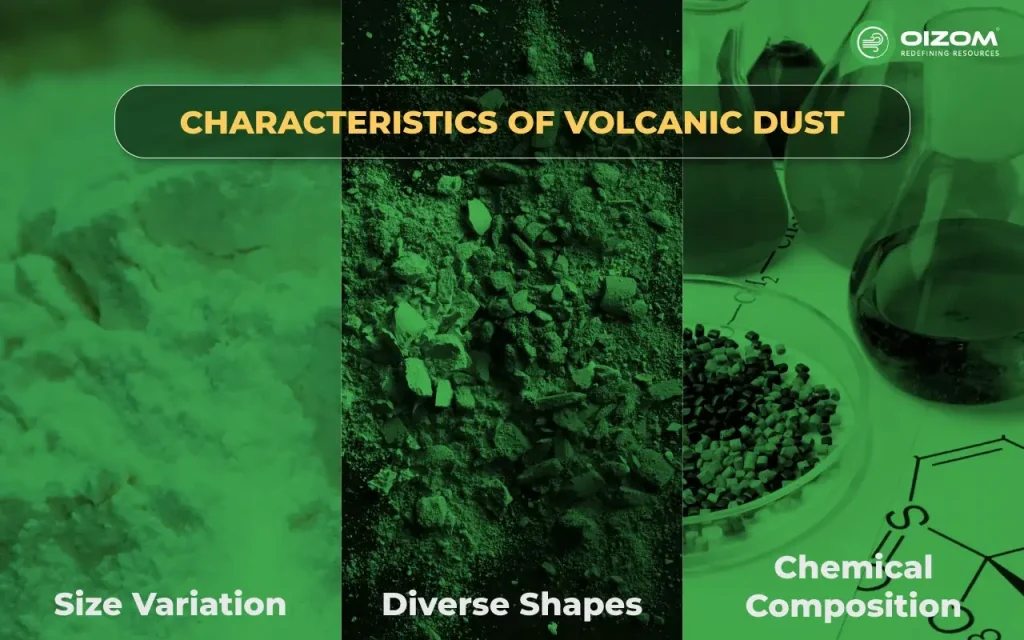
Three key characteristics define this fascinating substance:
- Size Variation: Volcanic dust ranges from fine, talcum powder-like ash to coarser lapilli. The finer the particle, the further it can travel, affecting air quality and creating visual phenomena like vibrant sunsets. Coarser grains, while less far-traveling, can significantly impact local infrastructure and agriculture.
- Diverse Shapes: From sharp, glass-like fragments to smooth pumice or jagged pieces, the shape of volcanic dust particles varies widely. This diversity influences health risks, as sharper particles can be more harmful when inhaled, and environmental impacts, with some conditions potentially enhancing soil fertility.
- Chemical Composition: Reflecting the magma’s makeup, volcanic dust can range from silica and aluminum-rich, which might harm vegetation and water quality, to basaltic with soil-enriching calcium and magnesium.
Health Effects of Volcanic Dust
Volcanic ash poses significant risks to humans, property, machinery, communities, and the environment. We will discuss the health effects of volcanic dust in this blog.
- People exposed to falling ash or living in a dusty environment following an ashfall may experience various issues. Respiratory difficulties include nose and throat irritation, coughing, bronchitis-like disease, and difficulty breathing. These can be decreased by wearing high-efficiency dust masks, but exposure to the ash should be avoided wherever feasible.
- If the ash contains a high concentration of silica, long-term consequences could include the development of a condition known as “silicosis.” The National Institute of Occupational Safety and Health in the United States advises particular masks for persons exposed to volcanic ash. Anyone with bronchitis, emphysema, or asthma should avoid exposure.
- Dry volcanic ash can attach to a moist human eye, causing discomfort. This difficulty is most severe for persons who wear contact lenses. People in ashfall zones observe some skin irritation; however, the number of instances and severity are limited.
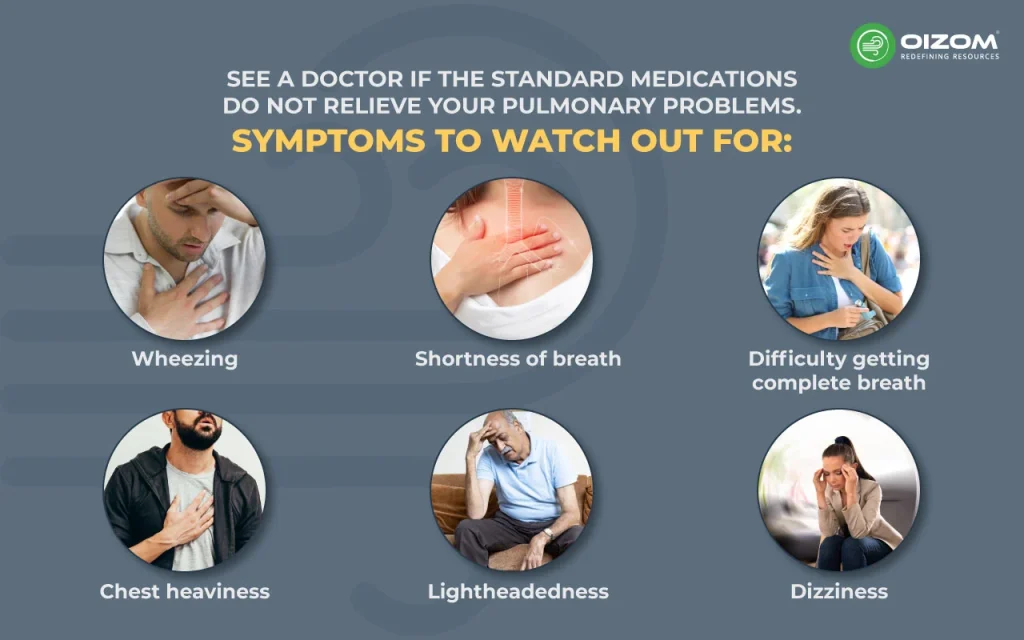
See a doctor if the standard medications do not relieve your pulmonary problems. Symptoms to watch out for:
- Wheezing
- Shortness of breath.
- Difficulty getting complete breath.
- Chest heaviness
- Lightheadedness
- Dizziness
If you have any concerns or queries, please consult your doctor.
Keep an eye out for breathing problems following exposure. Contact your doctor if you develop a persistent cough or have difficulty breathing. Symptoms may emerge as late as 24 to 48 hours following exposure. Ash can remain in locations for several days following a volcanic eruption and become airborne during recovery and cleanup.
Monitoring Strategies
Using advanced sensors and data analytics, Oizom Dust monitoring systems can accurately measure dust particle concentrations in the air. This real-time monitoring allows for timely and effective responses to dust pollution. For instance, in areas where volcanic eruption activities are causing elevated dust levels, Our device is designed with the material (AL-MG Alloy & Fiber Glass) & Engineering, which are robust.
Additionally, Oizom’s comprehensive data analysis helps identify dust pollution trends and sources, enabling long-term planning and policy-making to control dust more effectively. By providing actionable insights, Oizom empowers communities and authorities to make informed decisions, leading to a cleaner and healthier environment.
Mitigation Strategies
If vog will be heavy in your area, take these extra measures, especially if you suffer from a chronic breathing disease such as asthma or COPD (which includes chronic bronchitis and emphysema):
- Don’t smoke. Avoid secondhand smoke.
- Stay inside and use an air conditioner, if possible. Keep the air conditioner in the recirculation setting.
- If you have prescriptions, store them somewhere convenient. It is critical to continue taking your medications.
- Medications required for an acute episode should be readily available. Contact your doctor if you do not have any medications but believe you may need them. Ensure you receive clear instructions from your physician on what to do if your lung condition unexpectedly worsens.
- Check the wind direction to see if vog will be blown into your neighborhood that day. You can learn about the wind direction by watching the television weather report, listening to a weather radio, or checking the weather section of your local newspaper.
- Drink plenty of fluids unless your medical condition requires restricting your fluid intake.
- If you have respiratory problems, avoid outside physical exertion.
- Don’t rely on a dust mask. A paper, gauze surgical, or non-toxic dust mask will not filter out the hazardous tiny particles, and masks may not fit well.
NOTE: If wearing the mask makes breathing more difficult, do not use it. The mask is the least crucial of these options.
Conclusion
How does volcanic dust affect air quality and health? It releases fine particles and gases like sulfur dioxide, reducing air quality and causing respiratory issues, eye irritation, and lung diseases. Prolonged exposure also contaminates air, water, and soil, harming both health and the environment.
Volcanic dust is a complex natural occurrence with far-reaching consequences. Its size varies, as does its environmental impact, and its shapes influence health hazards and soil interactions. The chemical composition, reflecting the source magma, controls environmental and physiological repercussions. Understanding these characteristics of volcanic dust is critical for analyzing and reducing the effects of volcanic activity. This knowledge is essential not just for scientific understanding but also for practical disaster preparedness and environmental management. Communities near or downwind volcanoes having the potential to produce ash eruptions should examine the potential impact of volcanic ash and devise strategies to cope with it and reduce its effects. It is far easier to become educated about a problem and take action in advance than to face a massive problem unexpectedly.
Regulating inorganic dust is essential to maintaining environmental and occupational health. Implementing complete control measures, such as adequate engineering controls, administrative methods, and personal protective equipment, is critical in reducing the health risks associated with dust exposure. Regular air quality monitoring with real-time air quality monitors and health surveillance are crucial for early detection and prevention of adverse health outcomes. Adherence to laws and spreading knowledge about the dangers of inorganic dust improves safety practices. Recognizing that prevention and control of inorganic dust is a common duty involving collaboration from industries, workers, and environmental organizations is crucial.
FAQs
Volcanic dust's danger varies based on composition, size, shape, concentration, and exposure duration. Silica and aluminum-rich ash can irritate lungs and contaminate water, whereas basaltic ash may enrich soil. Finer particles pose more significant respiratory risks, while larger, smoother ones are less harmful. High concentrations and prolonged exposure increase health risks, potentially causing eye irritation, respiratory issues, and, in severe cases, silicosis. Safety guidelines during and after eruptions are crucial for protection.
There are three primary types:
- Ash: Fine particles that can travel long distances, affecting air quality and visibility.
- Lapilli: Rice to pebble-sized particles, impacting infrastructure and agriculture near the eruption.
- Bombs: Rare, large boulders solidified mid-air, posing significant threats upon landing.
Long-term effects include respiratory problems like asthma, particularly in individuals with existing conditions, and potentially silicosis in extreme cases. The dust's chemical makeup can also influence soil fertility and water quality, affecting agricultural productivity.
Volcanic ash can contribute to acid rain formation but is not the primary cause. Some ash contains sulfur compounds that form weak acids with water; however, acid rain is more significantly influenced by factors like nitrogen oxides from fossil fuel combustion.
The impact on agriculture and livestock depends on the ash's composition and quantity. Silica and aluminum-rich ash can damage crops and harm animals, while basaltic ash, containing beneficial elements like calcium and magnesium, can improve soil quality and promote short-term growth. Analyzing ash composition is essential to mitigate agricultural losses, possibly requiring specific agricultural interventions such as fertilizer application.

